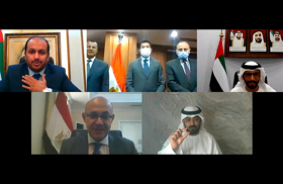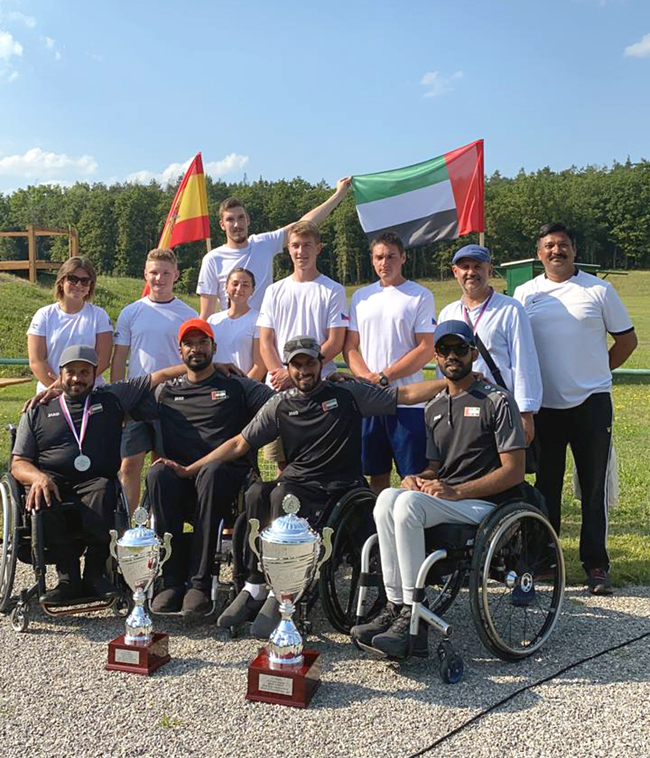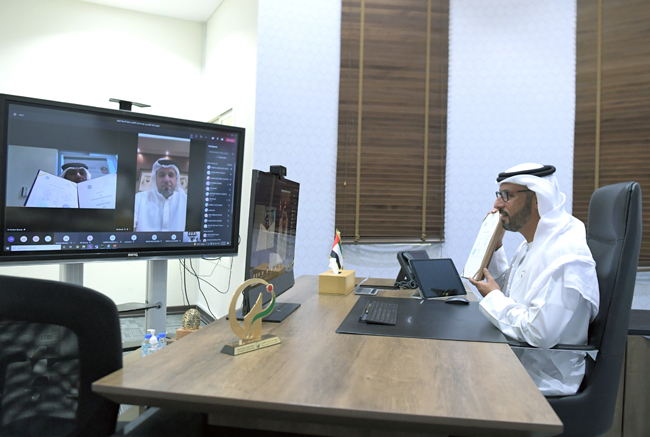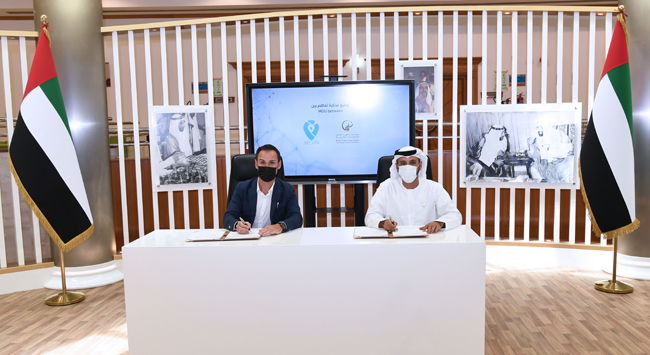Zayed Higher Organization for People of Determination participated in both national and global celebrations for "International White Cane Day" for the blind, which falls on October 15 of each year. On this occasion each year, the organization renews its emphasis on providing exemplary services and support to the people of determination under its care, especially those with visual impairments. On this day each year, the organization stands in support of those who have lost one of the most important of their senses, their sight.

Zayed Higher Organization for People of Determination participated in both national and global celebrations for "International White Cane Day" for the blind, which falls on October 15 of each year. On this occasion each year, the organization renews its emphasis on providing exemplary services and support to the people of determination under its care, especially those with visual impairments. On this day each year, the organization stands in support of those who have lost one of the most important of their senses, their sight.
His Excellency Abdullah Ismail Al Kamali, Executive Director of the organization's People of Determination Sector, said that the aim of this day is to express commitment of all nations and countries around the world in to support the blind and visually impaired. We come together to provide them with specialized services, equal rights and opportunities and ensuring that their needs are met, facilitating their capabilities, guaranteeing quality of life and ensuring their effective participation in social development.
He added that all groups under the organization's care, especially those with visual challenges, enjoy the highest standards of care and services, in line with the directives of our wise leadership with regards to social responsibility. The organization's services are also provided in accordance with the Abu Dhabi Government directives to optimize the organization's performance in accordance with global and international standards, as well as attracting leading global expertise and establish partnerships with distinguished international to provide the finest services for people of determination.
Her Excellency Naema Abdul Rahman Al Mansouri, Member of the National Federal Council and Director of the organization's Blind Care Department confirmed that, since its inception, the organization has been striving to achieve the hopes and aspirations of people of determination. These efforts are in line with government directives, which aim to advance the country and its citizens, through the provision of exemplary services for people of determination.
She added that the International White Cane Day is an important global occasion that Zayed Higher Organization for People of Determination participates in annually to highlight the services provided to this category of people of determination. She stressed that the social inclusion of our children of determination and their participation in events, activities and programs adopted and implemented by the organization is the greatest evidence of the awareness and support of our society; a sign of its unity and inclusion.
Her Excellency Naema Al-Mansoori invited all members of society to view the white cane as a symbol of the blind individual's freedom to move, work and visit public places frequented by others, and to consider this cane as a sign that its user is visually impaired and may need assistance.
The "white cane" is a tool used by the visually handicap to increase awareness of the immediate environment, the white color is a sign to others that the user is blind. The white cane user must obtain a cane of the right length for their height, use the cane with whichever hand feels most comfortable, and learn how to handle the cane and handle it,
to move independently.
Types of white cane
There are six types of white cane in the world, including:
The Symbol Cane, which is used by blind, visually impaired, and elderly to indicate that the person has a visual problem. It doesn't meet the necessary standards for the white cane for mobility and orientation.
The Guide Cane, which is used by blind to identify the type of surfaces where they walk, the edges of the sidewalks and the stairs, as well as to protect the lower part of the body. its length is slightly above the waist of the body. The tips of these canes are made of nylon or aluminum.
The-Long-Cane most widely used one for movement and travel independently. Its length goes from the ground up to person's chest area when he is standing in an upright position. Therefore, the length varies from one person to another. Through the long cane, the blind can detect the obstacles in his path to avoid them. The tips of these canes are made of nylon, and takes several styles, including rotating ball, supaball, pencil and pear shape.
Ordinary Walking Cane, used by the blind, the visually impaired, and the sighted, without having any special specifications. It is usually made of a solid wooden material that can bear to lean on.
Hubble Cane is a curved cane that is very similar to a tennis racket and is used in areas that is not suitable for long cane such as areas with rugged terrain and rocky roads. Its length up to person's chest area.
The Electronic Cane, designed in the shape of a long white cane, but it provides the blind with ultrasonic frequencies that he feels under his hand when he hits a certain obstacle in his path. It can also explore obstacles in all directions at a distance of five meters. The tips of this cane are made of lead.
SOURCE





